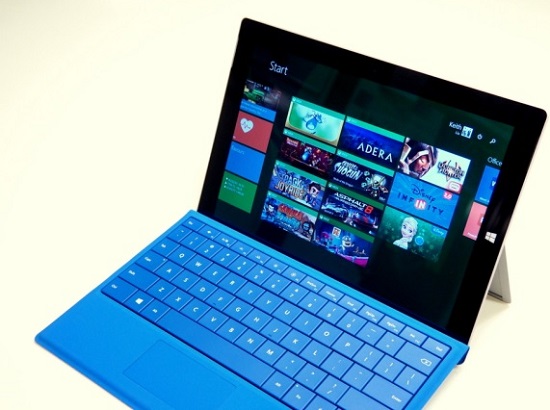Hybrid device shipments to rise by 70%, says Gartner
By Digital News Asia June 22, 2015
- To represent 26% of total mobile PC sales by 2019
- Hybrid ultramobiles to be fastest-growing segment

WORLDWIDE shipments of hybrid devices are on pace to reach 21.5 million units in 2015, an increase of 70% from 2014, according to Gartner Inc.
Hybrid devices will account for 12% of total sales of mobile PCs in 2015, rising to 26% in 2019, the research and analyst firm said in a statement.
“Of the 21.5 million hybrid devices shipped in 2015, 8 million will be ultramobile tablets (two-in-one tablets) and 13.5 million hybrid ultramobiles (two-in-one detachable and convertible ultramobiles),” said research director Tracy Tsai.
“This will make hybrid ultramobiles the fastest-growing segment of the mobile PC market with 77% year-on-year growth,” she added.
Gartner segments mobile PCs into notebooks and ultramobile premiums. A notebook is generally 14 inches and larger with a clamshell form factor. An ultramobile premium is generally 10 inches to 14 inches, thinner and lighter with three form factors – clamshells, hybrids and tablets.
In this research, Competitive Landscape: Hybrid Ultramobile Devices (Two-in-One Notebooks and Tablets), Gartner said it focused on the hybrid form factor, including convertible and detachable products.
“The combination of portability, productivity and flexibility of touch and a keyboard in one device is attracting some notebook and tablet users to replace their devices with hybrid form factors,” said Tsai.
“PC vendors are expanding into this segment with a value proposition to compete with Apple and Android-based tablet vendors.
“Sales of hybrid devices have not stopped growing since 2012, totalling 12.6 million units in 2014 and expected to reach 58 million units in 2019,” she added.
Gartner said that despite hybrid devices achieving strong growth, clamshells will remain the mainstream form factor, accounting for 87% of mobile PCs in 2015 and 74% in 2019.
Consumer and business markets, Win10
PC vendors are expanding into hybrid devices for notebook and tablet users, the primary targets for the hybrid form factor.
According to a Gartner survey of more than 21,000 respondents across five countries (Brazil, China, Germany, India and the United States) conducted in the third quarter of 2014, as many as 11% of tablet users, 10% of desktop users and 8% of notebook users are considering replacing their current device with a hybrid device in the next two years.
In the enterprise segment, IT departments are struggling to make a compelling case to purchase hybrid ultramobiles for users because the PC installed base is predominantly Windows 7 and legacy applications are not touch-based.
“However, this will change when businesses start to migrate to Windows 10,” said Tsai.
“Windows 10 on hybrid ultramobiles will offer a better user experience with touch and voice as well as universal Windows apps – apps written just once that receive device-specific user experience tweaks to allow them to run on different Windows devices,” she added.
Businesses will also need to prepare for the end of extended Windows 7 support by January 2020. It is now a good time to look beyond the clamshell notebook to consider if other form factors will make a better productivity fit, Gartner said in its statement.
Market overview: Asus leads
Asus, the first vendor to introduce a two-in-one ultramobile, was the No 1 hybrid ultramobile device vendor in 2014 with 41% market share.
Asus shipped 3.1 million hybrid ultramobile units, up 263% year on year. To keep up its market share, Asus needs to increase investment in convertible-type hybrids with smaller screen sizes of less than 13 inches, and broaden the price bands it addresses.
Currently, hybrid ultramobiles are accounting for 15% of Asus’ mobile PC shipments in 2014, the highest mix ratio among all PC vendors.
Lenovo took the No 2 position in 2014 with 1.9 million shipments of hybrid ultramobiles, an increase of 331% year on year.
Lenovo focused its hybrid strategy on expanding into the consumer market, and successfully increased its share of hybrid ultramobiles in North America from 6% in 2013 to 31% in 2014.
Similarly in Western Europe, Lenovo’s hybrid ultramobile market share grew from 16.5% to 27% from 2013 to 2014.
Hewlett-Packard (HP) was the third-largest player in the hybrid ultramobile market in 2014, selling 800,000 units.
In 2014, HP significantly expanded its product line in this segment with a broad range of consumer models across a variety of price points, from US$199 to US$1,999. This enabled the company to rise from the No 7 position in 2013.
 Microsoft’s Surface (pic) is classified as a tablet ultramobile rather than a hybrid ultramobile under Gartner's definition, as the touch-and-type keyboard is optional.
Microsoft’s Surface (pic) is classified as a tablet ultramobile rather than a hybrid ultramobile under Gartner's definition, as the touch-and-type keyboard is optional.
In the ultramobile tablet segment, Microsoft was No 1 with 36% market share in 2014. Combining the ultramobile hybrid and the ultramobile tablet, Microsoft was No 3 with 14% market share worldwide, just behind Asus and Lenovo.
Detailed analysis is available in the report Competitive Landscape: Hybrid Ultramobile Devices (Two-in-One Notebooks and Tablets)
Related Stories:
HP and Intel target the mobile, productivity-conscious user
DNA Test: Surface 3 is a laptop replacement … almost
Productive pair-up: Surface Pro 3 and Win10 Technical Preview
HP’s enterprise tablet strategy takes shape
Intel’s new CEO and president lay it out at IDF
For more technology news and the latest updates, follow us on Twitter, LinkedIn or Like us on Facebook.


